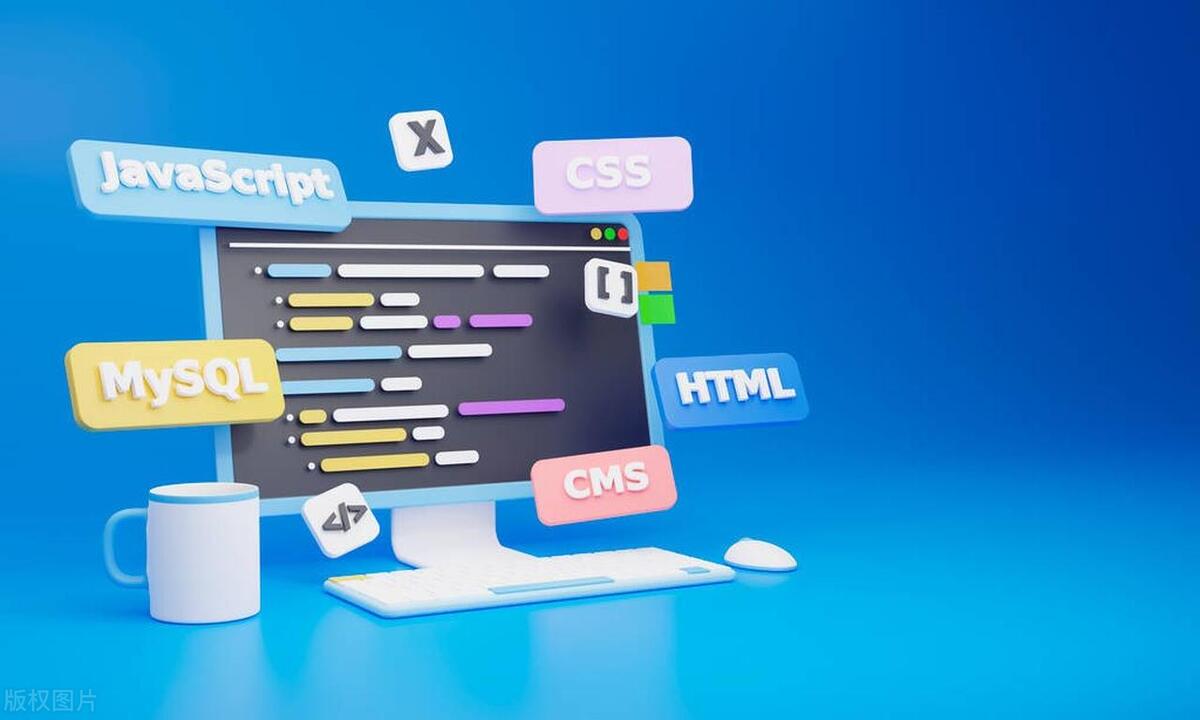Frontend Design System Adoption Challenges
Jul 20, 2025 am 02:18 AMThe difficulty in implementing the front-end design system lies in three aspects: unified cognition, technical maintenance, and document friendliness. 1. It is difficult to unify cognition. Designers, front-end and products have different understandings of the value of design systems. We need to promote consensus based on use cases and use high-frequency components to pilot the reuse value. 2. The technology implementation and maintenance costs are high, the component adaptation is difficult, the design changes are frequent, and the version management is lacking. It is recommended to adopt a modular architecture, Monorepo management and automated testing. 3. The documents are not friendly enough, the examples are insufficient, the parameters are unclear, and the search is inconvenient. Playground should be provided, the usage scenarios are clarified, the documents are automatically generated and the FAQ section should be established. The design system needs to be continuously operated and optimized regularly to truly improve collaboration efficiency.

During the implementation of the front-end design system, it is indeed impossible to simply introduce a set of component libraries to solve the problem. Many teams will encounter various obstacles when promoting the design system, resulting in the efficiency not increasing but decreasing, or even giving up halfway.

1. Unified cognition is difficult
The original intention of designing a system is to unify the UI style and improve collaboration efficiency, but the premise is to make all roles - designers, front-end development, product managers - understand and recognize its value. In reality, people often pay more attention to the tasks at hand and are not very interested in the construction of the "abstract layer".
- Designers may feel that the norms limit creative play
- The front-end believes that maintaining the component library is an additional burden
- Products are worried that the process will become complex and affect the delivery speed
The key to solving this problem is to promote consensus “from the use case”. For example, first select a few high-frequency components (buttons, forms, etc.) for pilot projects, so that everyone can see the efficiency improvement and quality improvement brought by reuse, and then gradually expand.

2. High technical implementation and maintenance costs
Many people think that everything will be fine with the components and documentation of Figma. In fact, the real difficulty lies in how to convert them into maintainable code and maintain consistency.
- Different projects have different technology stacks, and components are difficult to adapt
- Frequent design changes, high cost of synchronous updates
- Lack of version management and rollback mechanism
It is recommended to adopt a modular architecture progressive release strategy:

- Divide component modules by function to avoid the difficulty of maintaining a unified library
- Manage multiple packages with Monorepo for easy on-demand reference
- Introduce the Changelog mechanism to clarify the impact range of each update
In addition, automated testing must not be missed. If you rely on manual inspection, problems such as style regression and interaction exceptions are easily ignored or delayed.
3. The documentation and usage method are not friendly enough
Even if there is a component library, if the developer doesn't know how to use it for a long time, or the documentation is inconsistent with the actual API, it will be difficult to promote this system.
Frequently asked questions include:
- Too few or too ideal, departing from real business scenarios
- The parameter description is unclear and lacks best practices
- Lack of search function, low efficiency in finding components
The direction of improvement can be:
- Provides a Playground environment and supports real-time debugging
- Each component comes with "When to use" and "Things to note"
- Automatically generate API documents to reduce manual maintenance costs
You can also consider establishing a FAQ or Troubleshooting section to answer high-frequency questions in a concentrated manner.
Basically that's it. The implementation of the front-end design system is more like a continuous operation process than a one-time project. It requires someone to be responsible for a long time, collect feedback regularly, and optimize the experience to truly play a role.
The above is the detailed content of Frontend Design System Adoption Challenges. For more information, please follow other related articles on the PHP Chinese website!

Hot AI Tools

Undress AI Tool
Undress images for free

Undresser.AI Undress
AI-powered app for creating realistic nude photos

AI Clothes Remover
Online AI tool for removing clothes from photos.

Clothoff.io
AI clothes remover

Video Face Swap
Swap faces in any video effortlessly with our completely free AI face swap tool!

Hot Article

Hot Tools

Notepad++7.3.1
Easy-to-use and free code editor

SublimeText3 Chinese version
Chinese version, very easy to use

Zend Studio 13.0.1
Powerful PHP integrated development environment

Dreamweaver CS6
Visual web development tools

SublimeText3 Mac version
God-level code editing software (SublimeText3)
 How does React handle focus management and accessibility?
Jul 08, 2025 am 02:34 AM
How does React handle focus management and accessibility?
Jul 08, 2025 am 02:34 AM
React itself does not directly manage focus or accessibility, but provides tools to effectively deal with these issues. 1. Use Refs to programmatically manage focus, such as setting element focus through useRef; 2. Use ARIA attributes to improve accessibility, such as defining the structure and state of tab components; 3. Pay attention to keyboard navigation to ensure that the focus logic in components such as modal boxes is clear; 4. Try to use native HTML elements to reduce the workload and error risk of custom implementation; 5. React assists accessibility by controlling the DOM and adding ARIA attributes, but the correct use still depends on developers.
 Describe the difference between shallow and full rendering in React testing.
Jul 06, 2025 am 02:32 AM
Describe the difference between shallow and full rendering in React testing.
Jul 06, 2025 am 02:32 AM
Shallowrenderingtestsacomponentinisolation,withoutchildren,whilefullrenderingincludesallchildcomponents.Shallowrenderingisgoodfortestingacomponent’sownlogicandmarkup,offeringfasterexecutionandisolationfromchildbehavior,butlacksfulllifecycleandDOMinte
 What is the significance of the StrictMode component in React?
Jul 06, 2025 am 02:33 AM
What is the significance of the StrictMode component in React?
Jul 06, 2025 am 02:33 AM
StrictMode does not render any visual content in React, but it is very useful during development. Its main function is to help developers identify potential problems, especially those that may cause bugs or unexpected behavior in complex applications. Specifically, it flags unsafe lifecycle methods, recognizes side effects in render functions, and warns about the use of old string refAPI. In addition, it can expose these side effects by intentionally repeating calls to certain functions, thereby prompting developers to move related operations to appropriate locations, such as the useEffect hook. At the same time, it encourages the use of newer ref methods such as useRef or callback ref instead of string ref. To use Stri effectively
 Vue with TypeScript Integration Guide
Jul 05, 2025 am 02:29 AM
Vue with TypeScript Integration Guide
Jul 05, 2025 am 02:29 AM
Create TypeScript-enabled projects using VueCLI or Vite, which can be quickly initialized through interactive selection features or using templates. Use tags in components to implement type inference with defineComponent, and it is recommended to explicitly declare props and emits types, and use interface or type to define complex structures. It is recommended to explicitly label types when using ref and reactive in setup functions to improve code maintainability and collaboration efficiency.
 Server-Side Rendering with Next.js Explained
Jul 23, 2025 am 01:39 AM
Server-Side Rendering with Next.js Explained
Jul 23, 2025 am 01:39 AM
Server-siderendering(SSR)inNext.jsgeneratesHTMLontheserverforeachrequest,improvingperformanceandSEO.1.SSRisidealfordynamiccontentthatchangesfrequently,suchasuserdashboards.2.ItusesgetServerSidePropstofetchdataperrequestandpassittothecomponent.3.UseSS
 A Deep Dive into WebAssembly (WASM) for Front-End Developers
Jul 27, 2025 am 12:32 AM
A Deep Dive into WebAssembly (WASM) for Front-End Developers
Jul 27, 2025 am 12:32 AM
WebAssembly(WASM)isagame-changerforfront-enddevelopersseekinghigh-performancewebapplications.1.WASMisabinaryinstructionformatthatrunsatnear-nativespeed,enablinglanguageslikeRust,C ,andGotoexecuteinthebrowser.2.ItcomplementsJavaScriptratherthanreplac
 Vue CLI vs Vite: Choosing Your Build Tool
Jul 06, 2025 am 02:34 AM
Vue CLI vs Vite: Choosing Your Build Tool
Jul 06, 2025 am 02:34 AM
Vite or VueCLI depends on project requirements and development priorities. 1. Startup speed: Vite uses the browser's native ES module loading mechanism, which is extremely fast and cold-start, usually completed within 300ms, while VueCLI uses Webpack to rely on packaging and is slow to start; 2. Configuration complexity: Vite starts with zero configuration, has a rich plug-in ecosystem, which is suitable for modern front-end technology stacks, VueCLI provides comprehensive configuration options, suitable for enterprise-level customization but has high learning costs; 3. Applicable project types: Vite is suitable for small projects, rapid prototype development and projects using Vue3, VueCLI is more suitable for medium and large enterprise projects or projects that need to be compatible with Vue2; 4. Plug-in ecosystem: VueCLI is perfect but has slow updates,
 How to manage component state using immutable updates in React?
Jul 10, 2025 pm 12:57 PM
How to manage component state using immutable updates in React?
Jul 10, 2025 pm 12:57 PM
Immutable updates are crucial in React because it ensures that state changes can be detected correctly, triggering component re-rendering and avoiding side effects. Directly modifying state, such as push or assignment, will cause React to be unable to detect changes. The correct way to do this is to create new objects instead of old objects, such as updating an array or object using the expand operator. For nested structures, you need to copy layer by layer and modify only the target part, such as using multiple expansion operators to deal with deep attributes. Common operations include updating array elements with maps, deleting elements with filters, adding elements with slices or expansion. Tool libraries such as Immer can simplify the process, allowing "seemingly" to modify the original state but generate new copies, but increase project complexity. Key tips include each






